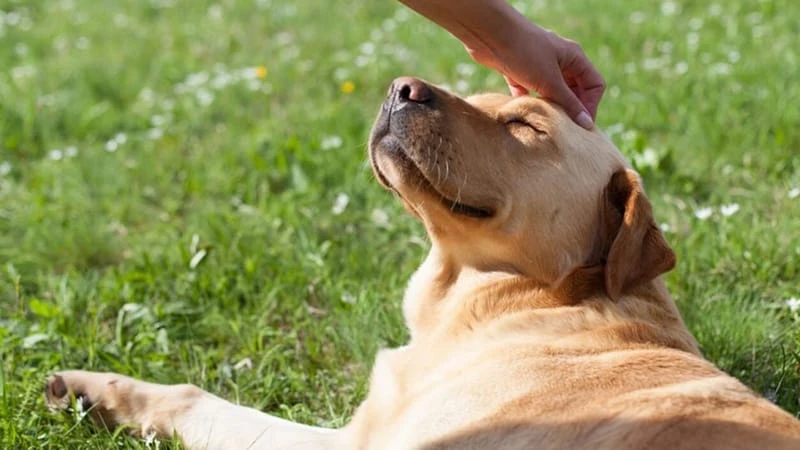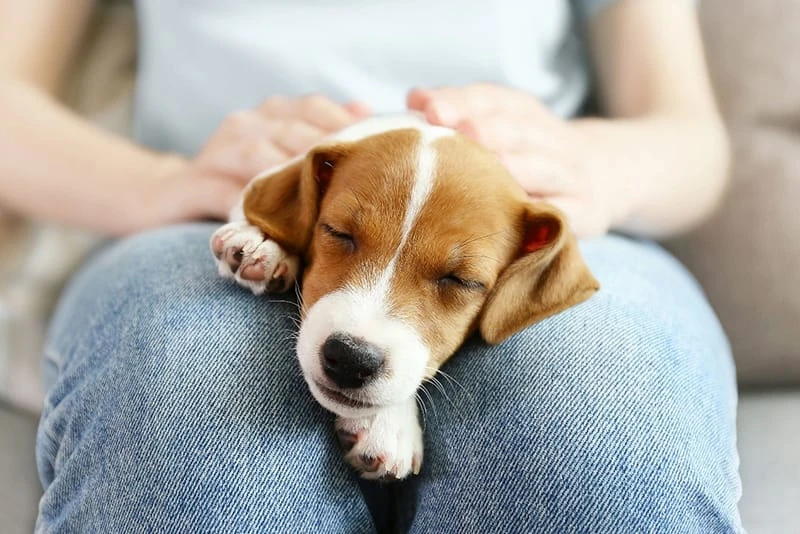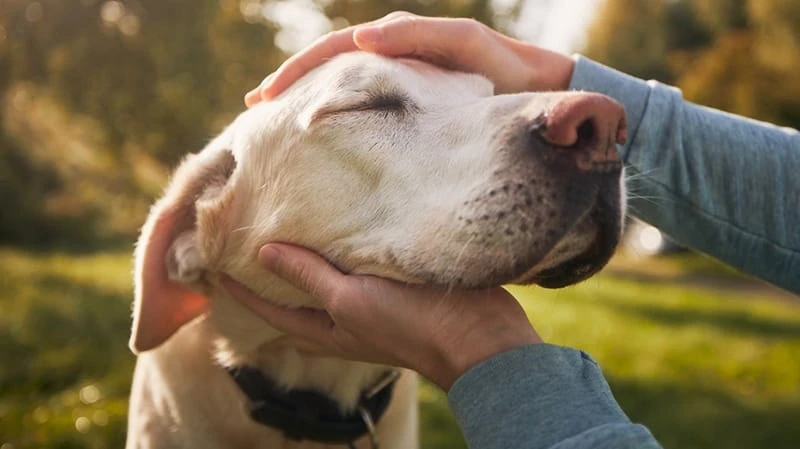A simple stroke of the hand is one of the most powerful ways we connect with a dog. Yet, many people often approach dogs with the best intentions but use methods—like reaching over the head or an aggressive hug—that can cause fear or anxiety.
In the world of dogs, a proper greeting is an exchange of respect. By learning how to read your dog's subtle body language, you can ensure your affectionate gesture is a welcome privilege, not an unwelcome intrusion.
This guide, based on ethical animal handling and canine behavior science, will teach you the three golden rules to get a paw-sitive response every time, and the definitive areas where a dog truly enjoys being touched.

The most important concept in interaction is consent. Petting is a privilege, not a right. We must consistently ask for, and receive, a dog's explicit permission to initiate and continue contact.
The Golden 3-Step Consent Test
Before you lay a hand on any dog—familiar or unfamiliar—follow these crucial steps:
Step 1: Always Ask the Owner & Maintain Distance
Before you get close:
· Verbal Permission: Politely ask the owner, "Is it okay if I say hello?" Respect a "no" without question.
· Establish Space: Remain at a non-threatening distance—at least four steps away—to give the dog room to assess you.
· The Owner’s Yes is Not the Dog’s Yes: Remember, the owner's permission only confirms the dog is generally friendly; it doesn't mean the dog wants to be touched right now.
Step 2: Offer a Side-Approach, Hand-Out Greeting
Avoid face-to-face confrontation, which can feel threatening.
· Avoid Straight-On: Approach the dog by walking in an arc or turning your body sideways. Never hover or bend over them, as height is intimidating.
· The Invitation: Slowly extend your hand, palm down or slightly cupped, towards the dog's side (not over their head). Keep it still.
· Wait for the Approach: Allow the dog to come to your hand for a sniff. If the dog moves away, turns its head, or looks stressed, respect the space and do not pursue them.
Step 3: Read the Body Language (The "Yes" and "No" Signals)
The dog's posture will tell you everything you need to know about their comfort level.
· A Clear "YES" (Continue Interaction):
o Loose and Wavy Tail: A soft, natural wag.
o Relaxed Body: Soft eyes, soft mouth, and relaxed ears.
o Affiliative Movement: The dog nudges your hand, leans its body into your leg, or actively seeks more contact.
· A Clear "NO" (Stop Immediately):
o Stress Signals: Lip licking, sudden yawning (when not tired), turning the head away, or avoiding eye contact.
o Stiffness: A sudden freezing or stiffening of the body posture.
o Evasion: Taking a step back, attempting to move away, or a tucked tail.

If the dog gives you a clear "YES" signal by leaning in or nudging your hand, you can begin the physical interaction. The best spots are often those they can’t reach themselves or areas that feel safe and non-vulnerable.
The Safe and Satisfying Spots (Start Here):
· The Chest: This is the universal favorite and the safest starting point for any dog. Use broad, gentle strokes along the front of the chest and under the chin. Many dogs will lean into you, signaling pleasure.
· Under the Chin: A great alternative to the top of the head. It's non-threatening and often accompanied by a low, happy rumble.
· Sides of the Shoulders & Back: Once you are acquainted, long, slow strokes that start at the shoulders and move along the sides of the dog's body (avoiding the spine) can be very soothing.
The Pet, Pet, Pause Technique
To check for ongoing consent, use this simple technique:
1. Pet the dog gently for three seconds.
2. Pause and remove your hand.
3. Observe the dog. If they nudge your hand, lean into you, or paw at you, they are asking for more. If they stay still or move away, the session is over, and you should respect their choice.
Knowing where not to touch is as important as knowing where to touch, especially with an unfamiliar dog. Touching these sensitive, vulnerable, or painful spots is the primary cause of defensive reactions.
· The Top of the Head: Avoid reaching or patting here, as the overhead motion is interpreted as a dominant or aggressive move.
· The Paws and Legs: Paws are extremely sensitive due to nerve endings and are vital for a dog’s sense of safety and mobility. Unsolicited handling of the paws or legs is often rejected.
· The Muzzle/Face: This is a highly sensitive area used for communication. Avoid grabbing, squeezing, or touching the area around the eyes or mouth.
· The Tail and Rear: The tail is a communication tool and is connected to the spine. Handling it without explicit trust can be jarring or painful.

Becoming a safe and skilled dog handler is about moving past human assumptions and embracing canine communication. By prioritizing the dog's "YES" and immediately respecting their "NO," you build trust and ensure every interaction is a moment of mutual joy and respect.
Go out there and be the most respectful pet-ambassador you can be!
Would you like me to research specific examples of dog breeds that are particularly sensitive to certain types of petting?